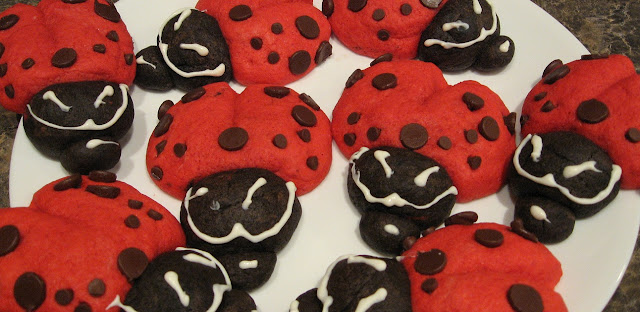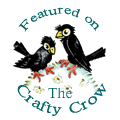For the last three or four years, we've celebrated the spotting our first spring ladybug, with a batch of ladybug cookies (from Gretchen Cooks).
We take a batch of sugar cookie dough and divide it into thirds.
We add red food coloring (it takes a lot if you want red, rather than pink) to two thirds of the dough, and a tablespoon of baker's chocolate with five or six drops of black food coloring to the remaining third.
Then, the children roll large (about 2 inch) balls of red dough for the bodies, and small (1 inch) balls of black dough for the heads.
This year, we decided to be slightly more scientific and add small heads in the front of the 1 inch balls, which aren't heads at all, but rather a protective shell, called the pronotum.
I used a sharp knife to split the wings, or really the elytra - the hard shell covering, that protects the wings.
The children added chocolate chips "spots" in a semetrical pattern to each elytra (ladybug spots are always semetrical - as far as I've read, and seen).
Since the first ladybug we saw this season was a convergent ladybug, we gave our cookie beetles 13 spots, with three mini chocolate chips...
...and three regular chocolate chips, on each side...
...and one right in middle (the number of spots for convergent ladybugs can vary, but 13 is typical).
After we baked our cookies (13 minutes at 350 degrees Fahrenheit), we used melted white chocolate chips to pipe a few additional, identifying details onto the pronotums...
...and heads of each beetle.
We should have made the elytra a little more elongated, into ovals instead of balls, and the lines we have on the ladybug's heads aren't quite right, but it's the two slanted lines on the pronotum, that are usually used to identify this variety of ladybug, anyway.
Convergent ladybugs are natives to North America, but according to Cornell University's Lost Ladybug Project, they are becoming rare in the eastern United States.
In the winter these ladybugs will aggregate, or swarm together, on mountain tops, making them easy pickings for bears, who don't mind their bitter taste, and commercial harvesters, who gather them from the wild to sell to garden centers across the country.
It's great to be a homeschooler.
Linked with Science Sunday at Adventure's in Mommydom.
















6 comments:
What a memorable way to learn about different types of ladybugs!! Love it!
You always make the prettiest cookies! Cool way to make science fun too.
Yummy and scientific! What a deal.
Love the cookies - now I know a lot more about convergent ladybugs than I did just 5 min before :)
They came out great! I could turn your little tutorial into a complete lady bug lesson! Awesome:)
Those look too cute to eat. :)
Post a Comment